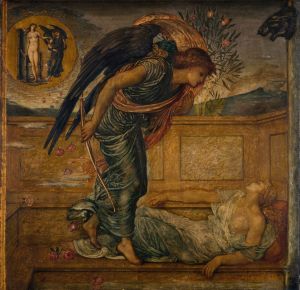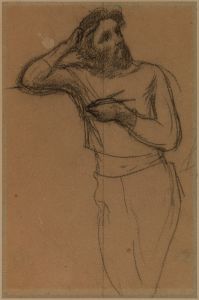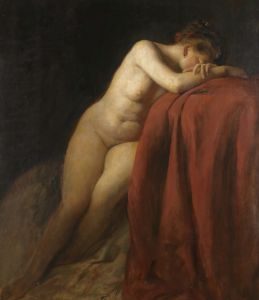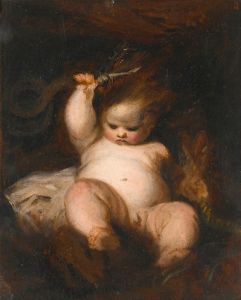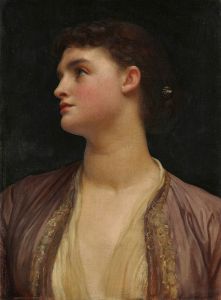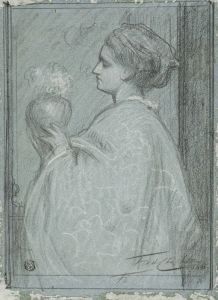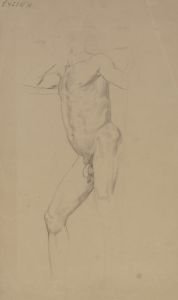
Venus And Cupid
A hand-painted replica of Frederic Leighton’s masterpiece Venus And Cupid, meticulously crafted by professional artists to capture the true essence of the original. Each piece is created with museum-quality canvas and rare mineral pigments, carefully painted by experienced artists with delicate brushstrokes and rich, layered colors to perfectly recreate the texture of the original artwork. Unlike machine-printed reproductions, this hand-painted version brings the painting to life, infused with the artist’s emotions and skill in every stroke. Whether for personal collection or home decoration, it instantly elevates the artistic atmosphere of any space.
"Venus and Cupid" is a painting by the British artist Frederic Leighton, 1st Baron Leighton, who was a prominent figure in the Victorian art world. Leighton was known for his association with the Pre-Raphaelite Brotherhood and his role in the Aesthetic Movement, which emphasized beauty and visual pleasure in art.
The painting "Venus and Cupid" depicts the Roman goddess Venus, known as Aphrodite in Greek mythology, and her son Cupid, also known as Eros. Venus is traditionally associated with love, beauty, and fertility, while Cupid is the god of desire, erotic love, attraction, and affection. The relationship between Venus and Cupid has been a popular subject in art for centuries, symbolizing the intimate connection between love and desire.
In this artwork, Leighton portrays Venus in a classical manner, drawing inspiration from ancient Greek and Roman art. She is depicted as an idealized figure of beauty, with flowing hair and delicate features. Cupid is shown as a cherubic child, often depicted with wings and a quiver of arrows, which he uses to instill love and desire in his targets.
Leighton's "Venus and Cupid" is characterized by its meticulous attention to detail and the artist's skillful use of color and composition. The painting reflects Leighton's academic training and his admiration for classical antiquity. The figures are rendered with a sense of grace and elegance, typical of Leighton's style.
The painting was created during a period when Leighton was at the height of his career. He was highly regarded by his contemporaries and held numerous prestigious positions, including the presidency of the Royal Academy of Arts. His works were celebrated for their technical proficiency and their embodiment of the ideals of beauty and harmony.
"Venus and Cupid" is part of Leighton's broader oeuvre, which includes other mythological and classical subjects. His works often explore themes of beauty, love, and the human form, and they are characterized by their refined execution and classical influences.
Leighton's contributions to the art world were significant, and his legacy continues to be appreciated by art historians and enthusiasts. His paintings are held in various public and private collections, and his former home, Leighton House in London, is now a museum dedicated to his life and work.
In summary, "Venus and Cupid" by Frederic Leighton is a notable example of Victorian art that draws on classical mythology to explore themes of love and beauty. The painting showcases Leighton's technical skill and his dedication to the ideals of the Aesthetic Movement, making it a valuable piece in the history of 19th-century art.






